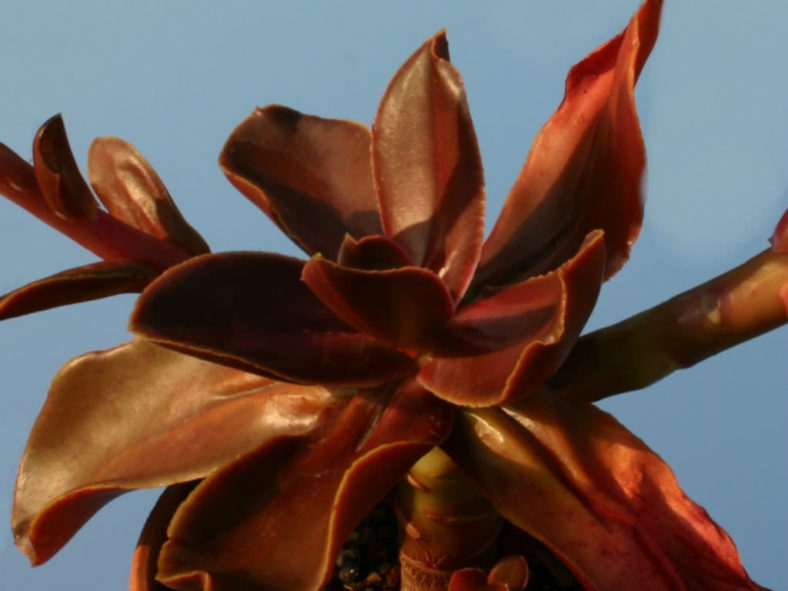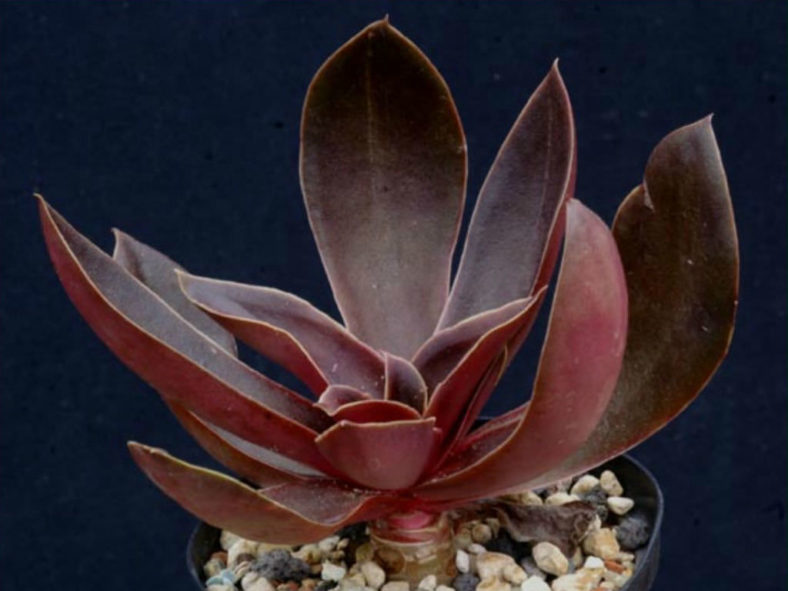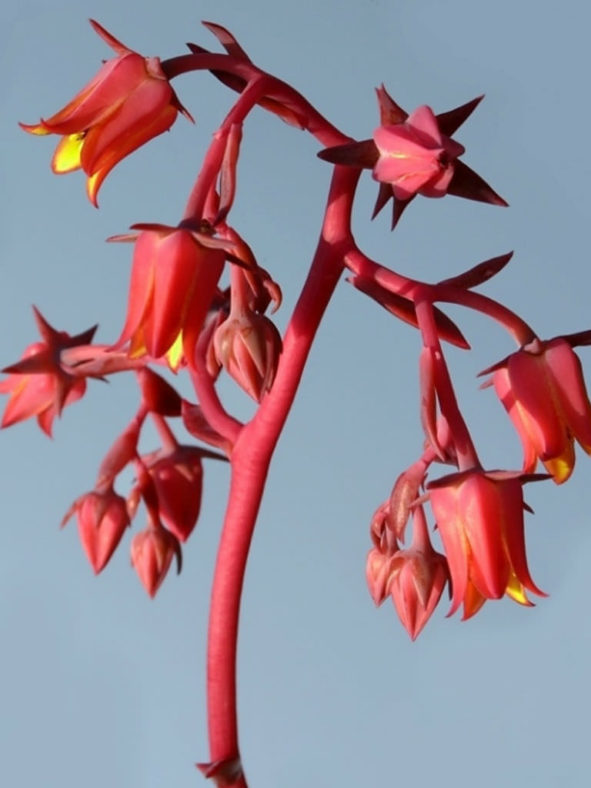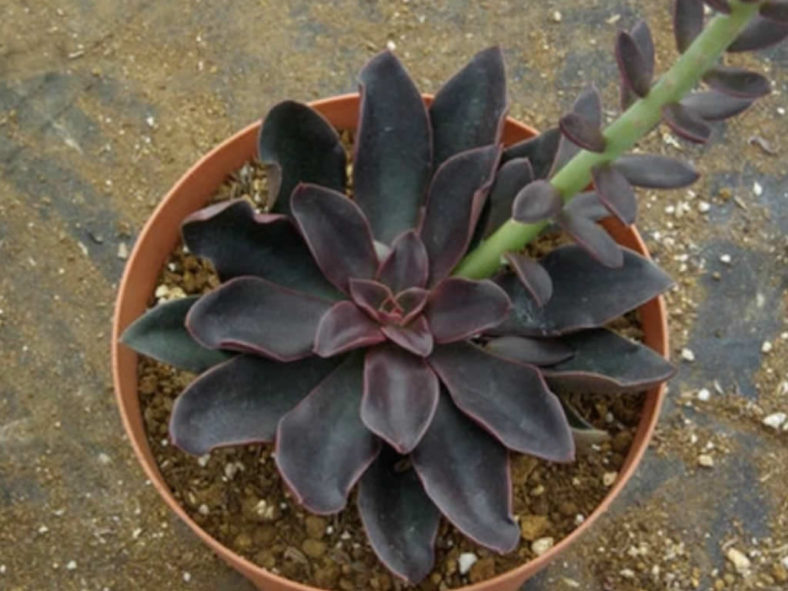Scientific Name
Echeveria atropurpurea (Baker) E.Morren
Synonym(s)
Cotyledon atropurpurea, Echeveria sanguinea
Scientific Classification
Family: Crassulaceae
Subfamily: Sempervivoideae
Tribe: Sedeae
Genus: Echeveria
Description
Echeveria atropurpurea is a showy succulent with short, stout stems and reddish-brown leaves covered with a glaucous bloom. The leaves are arranged in dense rosettes that can reach up to 8 inches (20 cm) in diameter. They are oval or spathulate and can measure up to 5 inches (12.5 cm) long and 2 inches (5 cm) wide.
The bright red, bell-shaped flowers appear in winter on erect stalks that can grow up to 12 inches (30 cm) tall.

Hardiness
USDA hardiness zones 9a to 11b: from 20 °F (−6.7 °C) to 50 °F (+10 °C).
How to Grow and Care
Most common Echeveria species are not complicated succulents to grow, provided you follow a few basic rules. First, be careful never to let water sit in the rosette as it can cause rot or fungal diseases that will kill the plant. Additionally, remove dead leaves from the bottom of the plant as it grows. These dead leaves provide a haven for pests, and Echeverias are susceptible to mealy bugs. Finally, as with all succulents, careful watering habits and plenty of light will help ensure success.
Repot as needed, preferably during the warm season. To repot a succulent, ensure the soil is dry before repotting, then gently remove the pot. Knock away the old soil from the roots, removing any rotted or dead roots. Treat any cuts with a fungicide.
Most Echeverias can be easily propagated from leaf cuttings, although some are better from seeds or stem cuttings. To propagate a leaf cutting, place the individual leaf in potting soil for succulents and cover the dish until the new plant sprouts.
See more at How to Grow and Care for Echeveria.
Origin
Echeveria atropurpurea is native to Mexico.
ICN suggests that the recently found plant from central Veracruz should be considered a hitherto unknown species and not connected with an obscure Echeveria atropurpurea of the 1870s, which may have been a hybrid most likely lost to cultivation for quite a long time.
Hybrids
Links
- Back to genus Echeveria
- Succupedia: Browse succulents by Scientific Name, Common Name, Genus, Family, USDA Hardiness Zone, Origin, or cacti by Genus
Photo Gallery
Click on a photo to see a larger version.


